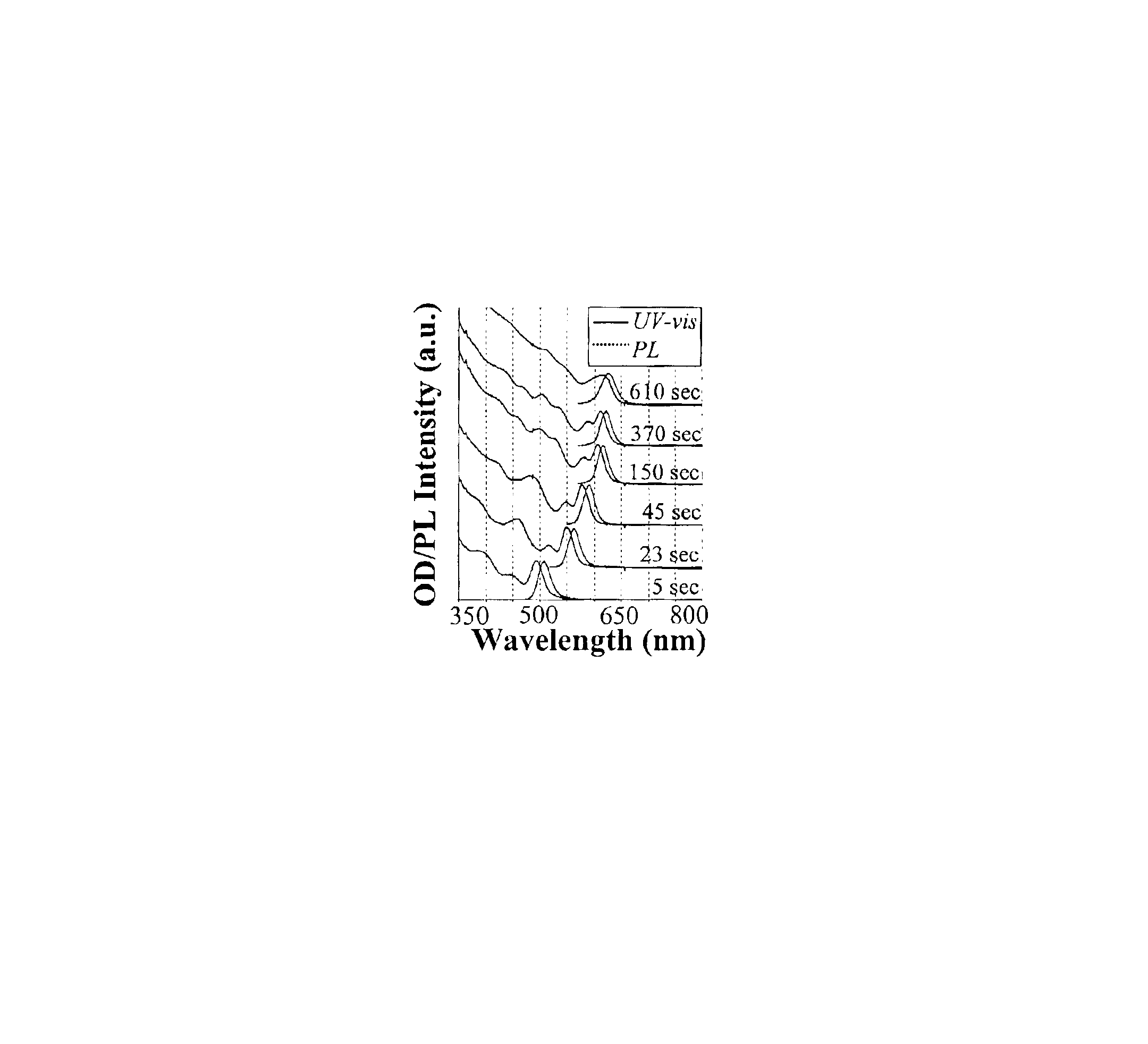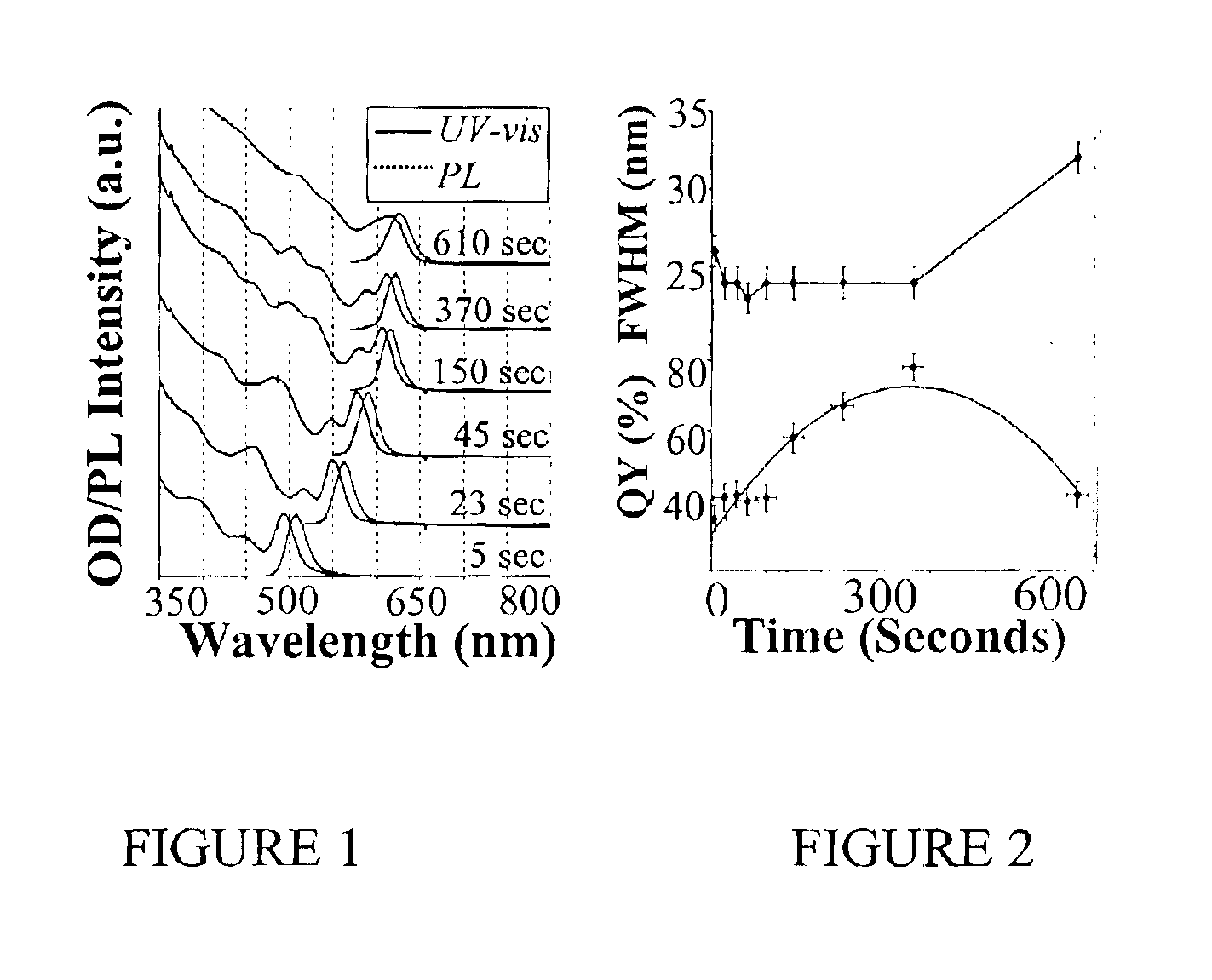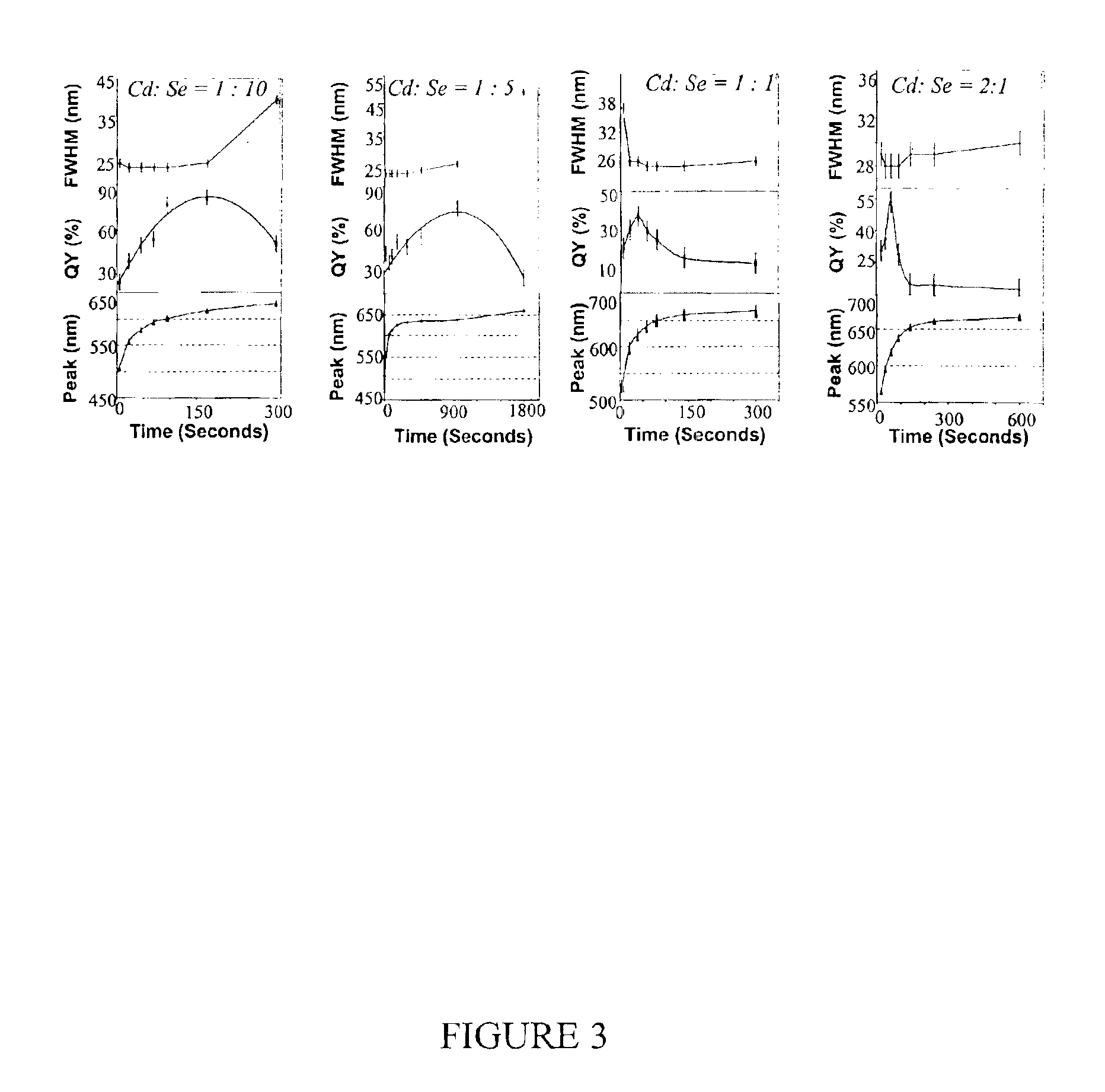Colloidal nanocrystals with high photoluminescence quantum yields and methods of preparing the same
a technology of photoluminescence and colloidal nanocrystals, which is applied in the direction of active medium materials, physical/chemical process catalysts, semiconductor lasers, etc., can solve the problems of delayed timely development of advanced applications for these unique materials, other two emission properties of brightness and emission stability, and the growth condition of nanocrystals
- Summary
- Abstract
- Description
- Claims
- Application Information
AI Technical Summary
Benefits of technology
Problems solved by technology
Method used
Image
Examples
example 1
[0077]General Synthetic and Experimental Details
[0078]The compounds trioctylphosphine oxide (TOPO), tributylphosphine (TBP), hexadecylamine, octadecylamine, stearic acid, CdO, and Se powder were purchased from Aldrich Chemical Company (Milwaukee, Wis.). Methanol, toluene, dodecylamine, chloroform, and acetone were purchased from VWR Scientific. Unless specified otherwise, the synthetic and characterization methods of nanocrystals used were similar to the ones reported previously for CdSe. (See: Peng, Z. A.; Peng, X. G. J. Am. Chem. Soc. 2001, 123, 1389-1395; Peng, Z. A.; Peng, X. J. Am. Chem. Soc. 2001, 123, 183-184; and Qu, L.; Peng, Z. A.; Peng, X. Nano Lett. 2001, 1, 333.)
example 2
[0079]Preparation of CdSe Nanocrystals with High Photoluminescence (PL) Efficiency
[0080]A typical synthesis of CdSe nanocrystals which exhibit a high photoluminescence (PL) efficiency is carried out as follows. A 0.0127 g (0.1 mmol) sample of CdO and 0.1140 g (0.4 mmol) of stearic acid were loaded into a 25 mL three-neck flask and heated to 150° C. under an argon flow. After the CdO was completely dissolved, the mixture was allowed to cool to room temperature, after which trioctylphosphine oxide (TOPO) and hexadecylamine (HDA), 1.94 g of each, were added to the flask. This mixture was stirred and heated to 320° C. under an argon flow to form an optically clear solution. At this temperature, the Se solution containing 0.079 g (1 mmol) of elemental Se dissolved in 0.238 g (1.18 mmol) of tributylphosphine (TBP) and 1.681 g of dioctylamine was swiftly injected into the reaction flask. After injection, the temperature was maintained at 290° C. for growth of the nanocrystals. At various t...
example 3
[0081]Photoluminescence Quantum Yield Measurements of CdSe Nanocrystals
[0082]The photoluminescence (PL) spectra of a given sample of the CdSe nanocrystals and an organic dye, whose PL spectrum overlaps significantly with that of the nanocrystal sample, were measured under the same setting of a Hitachi 2500 spectrophotometer. The scanning step of the spectrophotometer was set as 1 nm and marked as the error bars in the related figures. The optical density (OD) at the excitation wavelength of the dye and the nanocrystal sample was set to a similar value. The OD at either the first exciton absorption peak of the nanocrystals or the main absorption peak of the dye was below 0.1 in order to avoid any significant reabsorption. The PL quantum yield (QY) of the nanocrystal sample was finally obtained by comparing the integrated PL intensities of the nanocrystals with the corresponding dye. The measurement error of the PL QY was estimated to be about 5% and reported in the related figures as...
PUM
| Property | Measurement | Unit |
|---|---|---|
| temperature | aaaaa | aaaaa |
| photoluminescence emission peak | aaaaa | aaaaa |
| temperature | aaaaa | aaaaa |
Abstract
Description
Claims
Application Information
 Login to View More
Login to View More - R&D
- Intellectual Property
- Life Sciences
- Materials
- Tech Scout
- Unparalleled Data Quality
- Higher Quality Content
- 60% Fewer Hallucinations
Browse by: Latest US Patents, China's latest patents, Technical Efficacy Thesaurus, Application Domain, Technology Topic, Popular Technical Reports.
© 2025 PatSnap. All rights reserved.Legal|Privacy policy|Modern Slavery Act Transparency Statement|Sitemap|About US| Contact US: help@patsnap.com



